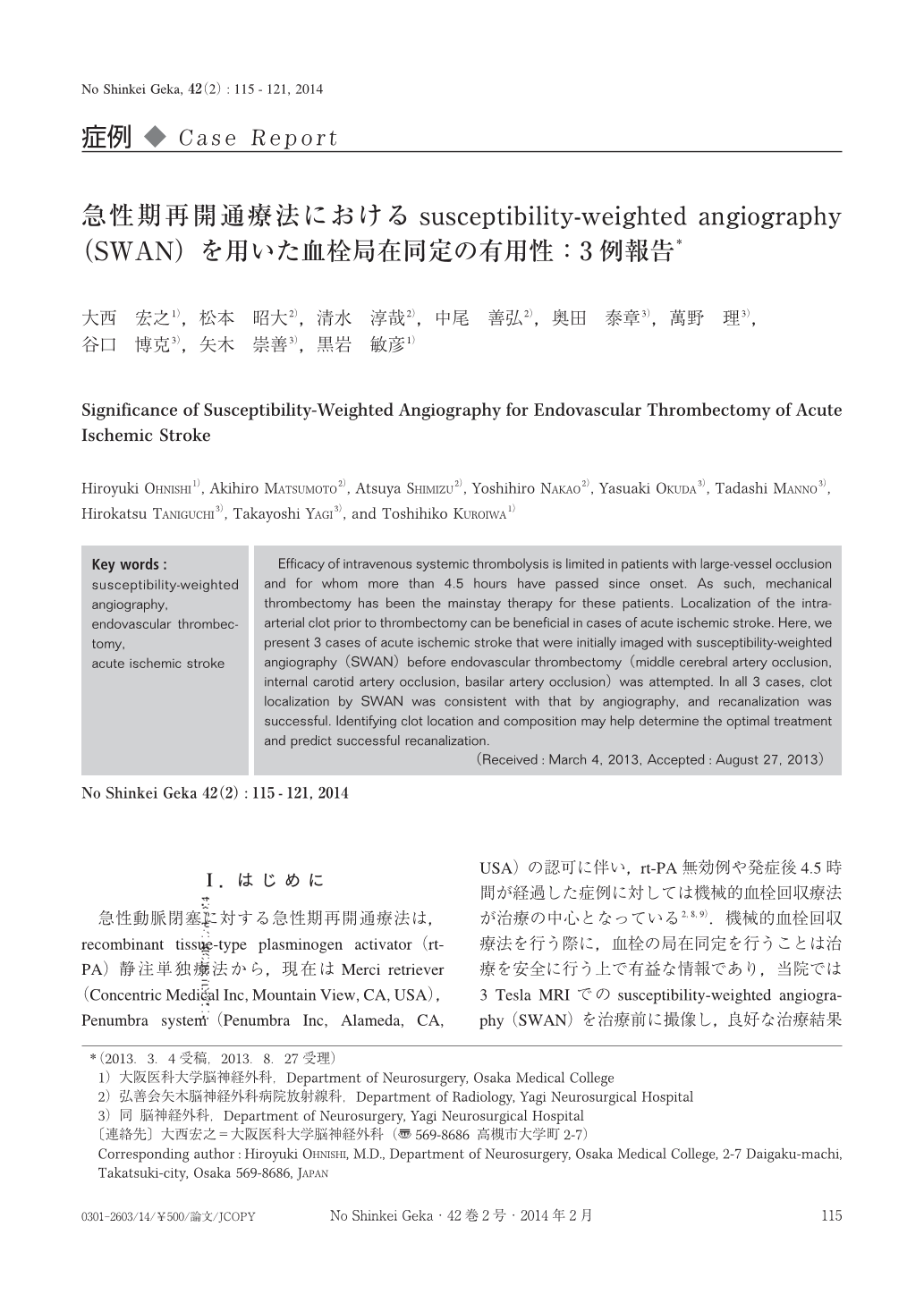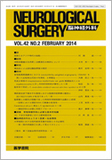Japanese
English
- 有料閲覧
- Abstract 文献概要
- 1ページ目 Look Inside
- 参考文献 Reference
Ⅰ.はじめに
急性動脈閉塞に対する急性期再開通療法は,recombinant tissue-type plasminogen activator(rt-PA)静注単独療法から,現在はMerci retriever(Concentric Medical Inc, Mountain View, CA, USA),Penumbra system(Penumbra Inc, Alameda, CA, USA)の認可に伴い,rt-PA無効例や発症後4.5時間が経過した症例に対しては機械的血栓回収療法が治療の中心となっている2,8,9).機械的血栓回収療法を行う際に,血栓の局在同定を行うことは治療を安全に行う上で有益な情報であり,当院では3 Tesla MRIでのsusceptibility-weighted angiography(SWAN)を治療前に撮像し,良好な治療結果を得ている.このSWANは3DのT2*強調像をベースとした撮像法で磁化率変化を鋭敏に捉えることができ,従来の2D gradient echo法によるT2*強調像よりも空間分解能が向上し,短時間でかつ高signal-to-noise ratio(SNR)の画像が得られるのが特徴である7).
今回,内頚動脈閉塞症,中大脳動脈閉塞症,脳底動脈閉塞症の3症例を提示し,急性期再開通療法におけるSWANの有用性について文献的考察を加え報告する.
Efficacy of intravenous systemic thrombolysis is limited in patients with large-vessel occlusion and for whom more than 4.5 hours have passed since onset. As such, mechanical thrombectomy has been the mainstay therapy for these patients. Localization of the intra-arterial clot prior to thrombectomy can be beneficial in cases of acute ischemic stroke. Here, we present 3 cases of acute ischemic stroke that were initially imaged with susceptibility-weighted angiography(SWAN)before endovascular thrombectomy(middle cerebral artery occlusion, internal carotid artery occlusion, basilar artery occlusion)was attempted. In all 3 cases, clot localization by SWAN was consistent with that by angiography, and recanalization was successful. Identifying clot location and composition may help determine the optimal treatment and predict successful recanalization.

Copyright © 2014, Igaku-Shoin Ltd. All rights reserved.


